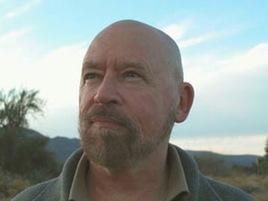Dr. C. N. Slobodchikoff, Northern Arizona University
29/04/08 08:18 Filed in: Professional
praise
 My wife Judy and I watched
your movie the other night and were hugely
impressed. From the very start, it is
evident that this is a different kind of
conservation film. We loved how we, the
viewers, were immediately invited “behind
the scenes.” We got an immediate impression
of Dr. Mittermeier as a man who, more than
just spouting lines, is genuinely captured
by the beauty and rarity of these precious
places and their inhabitants.
My wife Judy and I watched
your movie the other night and were hugely
impressed. From the very start, it is
evident that this is a different kind of
conservation film. We loved how we, the
viewers, were immediately invited “behind
the scenes.” We got an immediate impression
of Dr. Mittermeier as a man who, more than
just spouting lines, is genuinely captured
by the beauty and rarity of these precious
places and their inhabitants.
We soon recognized how this point of view enables you to give the audience an up-close look at what it’s really like to be a field biologist—Mud spattered, drenched with rain, and having to lug equipment and bodies over swollen rivers, through dense jungle—and yet, the joy when an elusive subject is finally located—It all came through vividly.
All too often, nature programs show the beauty of a place without capturing the dedication of the researchers who are revealing the lives of animals amid clouds of mosquitoes, drenching rains, and stifling heat.
I especially liked the way each researcher was allowed to voice his or her knowledge, hopes and concerns about each study animal. You also captured the “feel” of each place, including its proximity to the hustle and chaos of nearby human settlements. I liked how you juxtaposed the joy of actually seeing these rare species, with the heartbreak of looking for them in some places and realizing that they are gone. Before we the viewers can get judgmental about the “uneducated” farmers who burn their forests and destroy precious habitat, you show how we in a “progressive” nation are doing exactly the same thing.
But most of all, you have, conveyed the value and rarity of these places. They are no longer just specks on a map to us; we feel as though we have been there with you.
Judy really appreciated the editing—fast-paced and packed with imagery—that captured the diversity and richness of each area. The editing gave the film an “edgy” look that is likely to appeal to a generation of viewers who are becoming bored with the slow and stodgy pace of traditional nature films. It also gave the film an immediacy that reflects our 24/7 culture that is so vital to generation X viewers, the ones who will be making the conservation decisions of tomorrow.
Place by place, situation by situation, you carefully built an inspiring case that mere rhetoric could never have accomplished. In our opinion, this film can be as influential as “An Inconvenient Truth.” We give you a standing ovation.
I would be honored if I could participate in your showing it in Flagstaff.
Best regards,
Con
-- .
Dr. C. N. Slobodchikoff
Professor of Biology
Department of Biological Sciences
Northern Arizona University, Flagstaff

